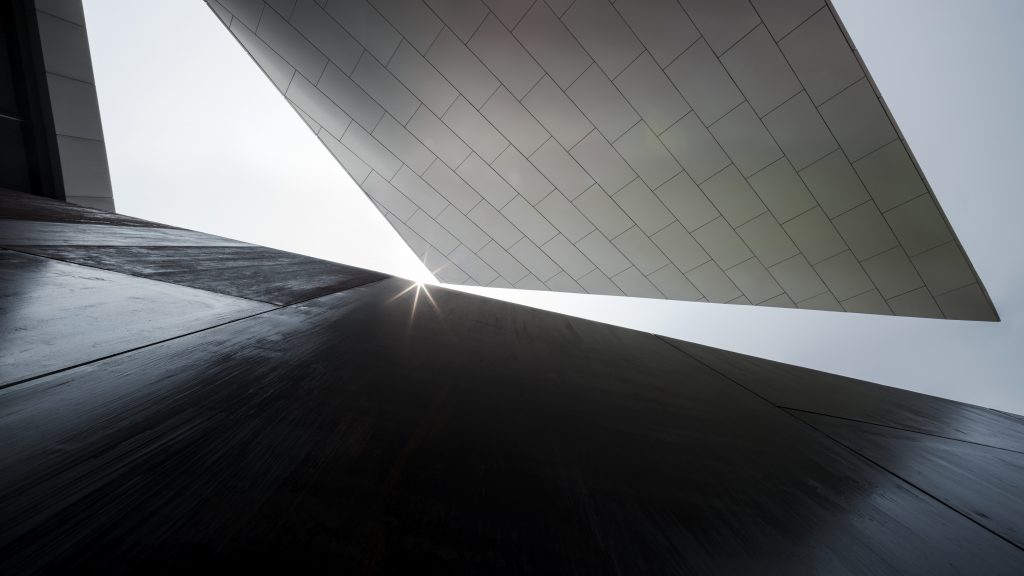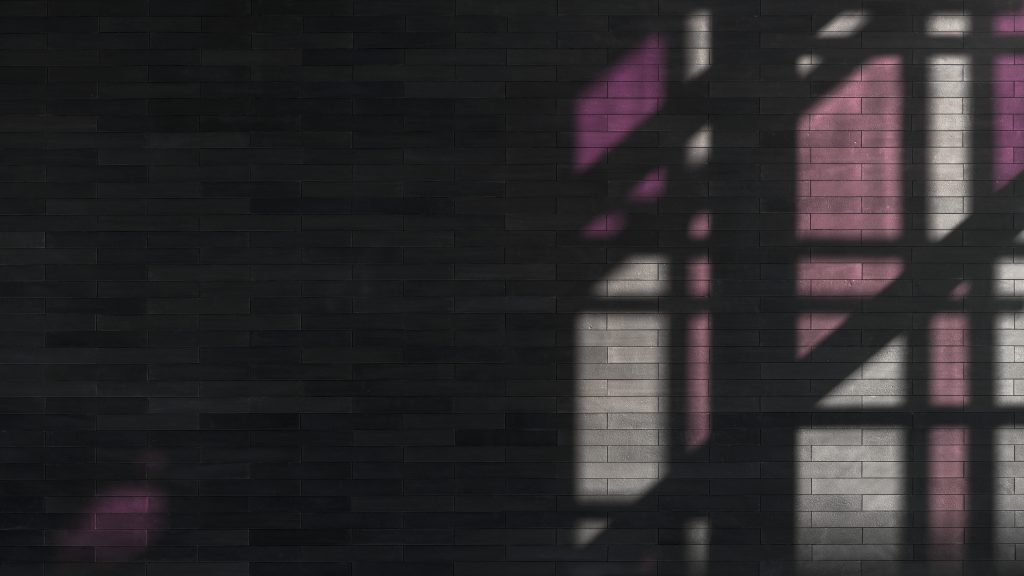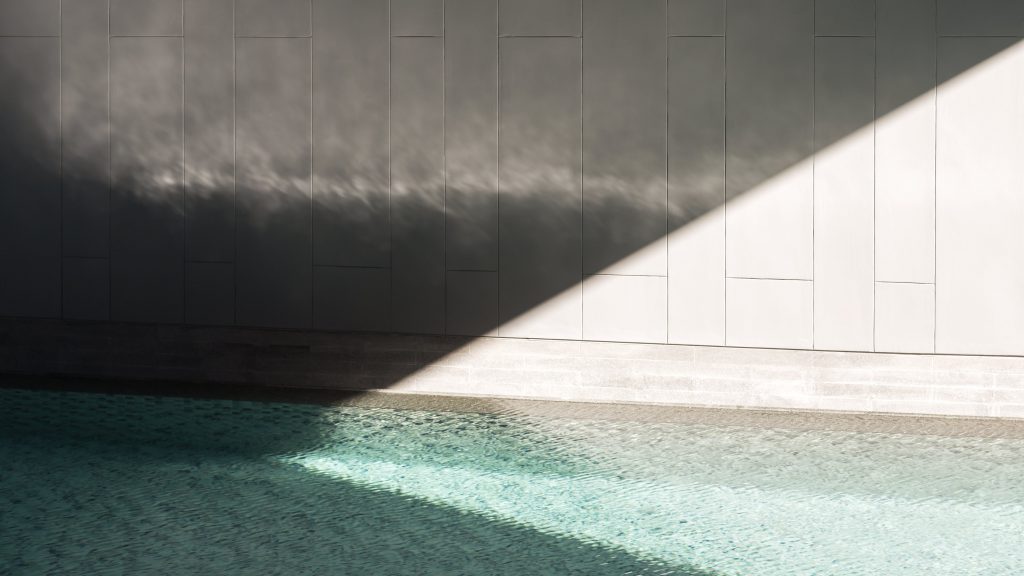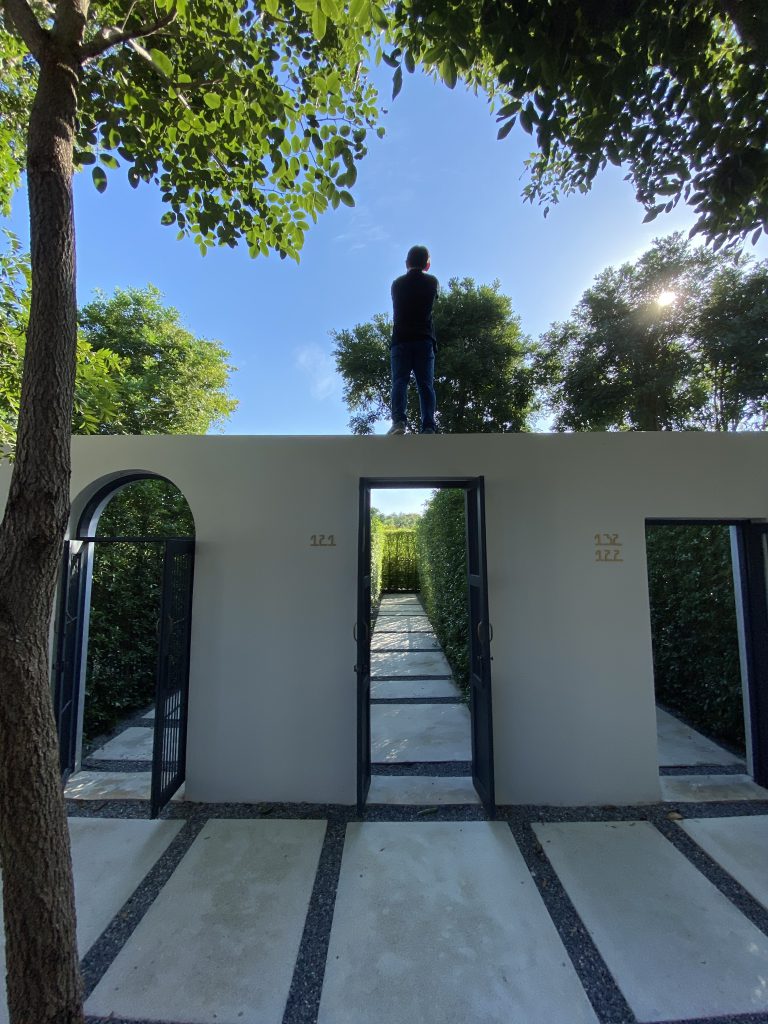Wison Tungthunya began his career as an architectural photographer as soon as he graduated. Twenty-four years later, he’s still walking on this path and has so far spent more than half of his evolving and thriving professional life on ‘W Workspace’. The company was born from his belief and dedication to create a place of his own that is full of variety. ASA takes a closer look and dives deeper into what the work of architectural photographer is all about.
Text: Nuttawadee Suttanan
Photo: W Workspace

วิสันต์ ตั้งธัญญา หรือ แป๊ะ” เริ่มต้นการทำงานเป็นช่างภาพสถาปัตยกรรมทันที่ที่จบการศึกษา และเขายังคงทำอาชีพนี้มายาวนานกว่า 24 ปี เกินครึ่งในชีวิตการทำงานของเขาคือ “W Workspace” บริษัทที่เกิดขึ้นจากความเชื่อและมุ่งมั่นที่จะสร้างพื้นที่ทำงานที่เป็นของตัวเองและเต็มไปด้วยความหลากหลาย และในวันนี้ วิสันต์ ได้เปิดโอกาสให้ ASA Professional เข้าไปในพื้นที่ Workspace ของเขา เพื่อทำความเข้าใจการทำงานของช่างภาพสถาปัตยกรรมให้มากยิ่งขึ้น
ตอนเรียนจบให้โอกาสตัวเองหนึ่งปี ไปทำลองทำอะไรที่อยากทำให้หมดเลย แล้วจะได้รู้ว่าอยากทำอะไรกันแน่
ในปี 2540 วิสันต์ ตั้งธัญญา หรือ แป๊ะ เป็นบัณฑิตจบใหม่จากสาขาสถาปัตยกรรมศาสตร์ คณะสถาปัตยกรรมศาสตร์ จุฬาลงกรณ์มหาวิทยาลัย หลังจากเรียนจบ เขาเริ่มต้นงานที่ Skyline Studio ของสมคิด เปี่ยมปิยชาติ ผู้นับเป็นรุ่นบุกเบิกการถ่ายภาพสถาปัตยกรรมในเมืองไทย ด้วยความตั้งใจเปิดโอกาสให้ตัวเองได้ลองทำอะไรที่อยากทำเพื่อจะได้ค้นพบว่าสิ่งที่ต้องการคืออะไร หลังจากเข้าปีที่ 3 ของการทำงานที่ Skyline Studio สิ่งหนึ่งที่แป๊ะได้เรียนรู้ตลอดมาว่างานถ่ายภาพสถาปัตยกรรมคืองานที่เขาชอบจริงๆ แต่ในขณะเดียวกันเขาก็เริ่มรู้สึกว่างานของเขาเริ่มนิ่ง ผลงานจึงออกมาในรูปแบบเดิม ๆ รวมทั้งรู้สึกว่าตัวเองยังขาดความรู้ในอีกหลายด้าน เขาจึงตัดสินใจขอลาออกจาก Skyline Studio เพื่อไปหาประสบการณ์ด้านอื่นมาพัฒนาตัวเอง หลังจากนั้นแป๊ะก็ได้ไปลองทำงานหลายๆ อย่าง ไม่ว่าจะเป็น Graphic Design/ Character Design/ Advertising agency/ Production House การได้ทำงานที่หลากหลายเป็นการเปิดโลก และทำให้เขาได้เห็นกระบวนการทำงานที่กว้างขึ้นและแตกต่างไปจากที่เขาคุ้นเคย
W Workspace ก่อตั้งขึ้นในปี 2551 หลังจากแป๊ะได้ลองทำงานหลายๆ อย่างมาเป็นเวลาถึง 9 ปี เขาก็ตัดสินใจเปิดบริษัทเป็นของตนเอง ร่วมกับหุ้นส่วนซึ่งเป็นเพื่อนร่วมสถาบันจากคณะนิเทศศาสตร์ที่เคยทำงานด้วยกันมาก่อน (และปัจจุบันก็เป็นหุ้นส่วนชีวิตด้วยเช่นกัน) โดยในช่วงเริ่มแรก W Workspace รับงาน 3 ส่วนเป็นหลัก คือ 1) Brand Consultant 2) Interior Design & Home Decoration และ 3) งานถ่ายภาพสถาปัตยกรรม ก่อนที่ 5 ปีต่อมา จะตัดสินใจหยุดพักในส่วนของ Interior Design และในปัจจุบัน W Workspace จะเน้นไปที่งาน Brand Consultant กับงานถ่ายภาพสถาปัตยกรรม โดยน้ำหนักชองงานในบริษัทจะอยู่ที่งานถ่ายสถาปัตยกรรมเป็นหลัก มีทั้งงานถ่ายภาพนิ่ง งานถ่ายวีดีโอ งานถ่าย virtual tour 360 องศา ซึ่งมีผลงานในระดับเอเชียทั้งสิงคโปร์ จีน เวียดนาม พม่า มาเลเซีย ส่วนงาน Brand Consultant ก็เป็นการทำงานในเรื่องการออกแบบการสื่อสาร (Communication Design) ที่เริ่มตั้งแต่เรื่องการสร้าง Brand Concept ไปจนถึงการออกแบบ Brand Identity หรือสัญลักษณ์ของโครงการ และนอกจากนี้ W Workspace ก็กำลังจะมีการขยายงานไปทางด้านอื่นๆ ในอนาคตอันใกล้นี้
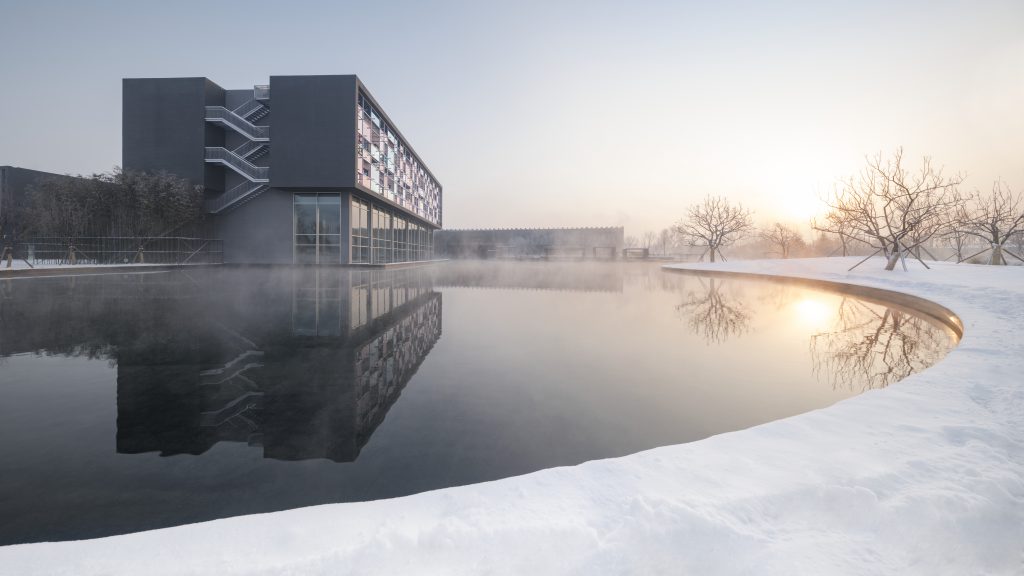
“ปัจจุบัน เราก็ยังเป็นบริษัทเล็กๆ อยู่ ยังเป็น Home Office เหมือนเดิม”
ปัจจุบัน W Workspace ก้าวเข้าสู่ปีที่ 13 แล้ว แต่สำหรับวิสันต์เขายังรู้สึกว่าบริษัทของเขายังเป็น Home Office เล็กๆ เหมือนวันแรกของการก่อตั้งบริษัทเช่นเดิม ในปีแรกมีคนในบริษัท 6 คน รวมหุ้นส่วนทั้ง 2 คน โดยพนักงานบริษัท 4 คน อยู่ในส่วนของช่างภาพสถาปัตยกรรมและมัณฑนากร แน่นอนว่าตำแหน่งเจ้าหน้าที่ธุรการ ประสานงาน หรือแม้กระทั่งการจัดการบัญชีเบื้องต้น จึงตกเป็นหน้าที่ของหุ้นส่วนทั้ง 2 คน ที่ต้องทำงานในส่วนของหลังบ้านทั้งหมด รวมทั้งหน้าที่ของการคัดเลือกคนที่จะร่วมงานใน W Workspace ด้วยเช่นกัน “เราคิดว่าพอเราทำบริษัทมา 10 กว่าปี เราจะเริ่มรู้แล้วว่าธรรมชาติของบริษัทเราเป็นยังไง แล้วก็ธรรมชาติของคนที่จะอยู่ที่บริษัทเราเป็นยังไง บางคนมาเราจะรู้เลยว่าวันนี้เคมีไม่น่าจะเข้ากัน หรือว่าบางคนใช่เลย แต่ว่าเราต้องคุยกันก่อน เจอตัวกันก่อน เห็นบุคลิก แล้วก็จะตอบได้ นอกจากเคมีที่ต้องไปด้วยกันได้ เราก็ต้องการความหลากหลายในบริษัทด้วยเช่นกัน เพื่อให้บรรยากาศของบริษัทมีสีสันและความเคลื่อนไหวตลอดเวลา”
ปัจจุบันบริษัทมีพนักงานประมาณ 13 – 14 คน ประกอบด้วยทีมช่างภาพสถาปัตยกรรมและธุรการซึ่งเพิ่งจะมีเมื่อ 3 ปีที่แล้ว สำหรับการจัดการบัญชีเป็นการจ้างผู้เชี่ยวชาญจากภายนอก และในส่วนของ Brand Consultant หุ้นส่วนทั้งสองคนจะทำหน้าที่ดูแลงานเองเป็นหลัก และทำงานร่วมกับผู้เชี่ยวชาญเฉพาะด้านที่เคยทำงานร่วมกันมาแล้ว โดยในบางงานก็มีการดึงทีมช่างภาพสถาปัตยกรรมมาร่วมทำงานในบทบาทที่ไม่ใช่ช่างภาพ เป็นการช่วยเปิดมุมมองในการถ่ายภาพให้ทีมงานอีกวิธีหนึ่งตามรูปแบบของ W Workspace

เราขอให้เข้าออฟฟิศอย่าช้ากว่า 10 โมงเช้า ส่วนเวลาเลิกงานก็แล้วแต่งานในช่วงนั้น คือถ้าสมมติไม่มีงานหรือว่าจัดการงานเสร็จแล้ว จะเดินไปเปิดตู้เย็นกินเบียร์ จะเดินไปดูหนัง ตามสบายเชิญเลย แต่ว่าถ้าวันไหนแบบมีงานด่วนต้องส่งพรุ่งนี้ วันนี้ก็แบบอดนอนกันหน่อยนะ คือเอางานเป็นหลัก ถ้าคุณจัดการงานตัวเอง จัดการงานเรียบร้อยก็โอเค
“Freestyle” อาจเป็นคำที่อธิบายการทำงานแบบ W Workspace ได้ดี แป๊ะบอกกับเราว่า W Workspace เป็นบริษัทที่มีกฎเกณฑ์ในการทำงานค่อนข้างน้อยและมีความยืดหยุ่นสูง ก่อนจะมีสถานการณ์ Covid-19 พนักงานในบริษัทที่ไม่ได้ออกกองถ่ายภาพจะเข้ามาทำงานที่บริษัทตามปกติเพื่อความสะดวกในการจัดการงาน แต่สำหรับในส่วนของเจ้าของบริษัทอย่างแป๊ะ เนื่องจากต้องยังออกไปถ่ายงานอยู่เป็นประจำ จึงทำให้ไม่ได้เข้าบริษัทบ่อยนัก แป๊ะใช้การคุยหรือตรวจงานผ่านช่องทางออนไลน์ หรือเจอกันในเวลาที่ต้องออกกองถ่ายภาพ ส่วนการประชุมบริษัทก็เป็นการประชุมเพื่อสรุปทิศทางของบริษัทอย่างน้อยปีละ 2 ครั้ง สำหรับสถานการณ์ Covid-19 ที่อาจส่งผลกระทบกับหลายธุรกิจ แต่การทำงานของ W Workspace ได้รับผลกระทบไม่มากนัก อาจจะมีขั้นตอนการทำงานที่เพิ่มมากขึ้น แต่ก็ยังมีงานเข้ามาอยู่อย่างสม่ำเสมอ สิ่งที่น่าสนใจที่เห็นได้ชัดจากสถานการณ์นี้คือการจัดการด้วยระบบ Car pool หรือการใช้รถร่วมกัน เพื่อลดความเสี่ยงจากการเดินทางให้แก่พนักงานในบริษัท เป็นอีกสิ่งที่แสดงให้เห็นถึงความห่วงใยในบริษัทเล็กๆ ที่อบอุ่นแห่งนี้
งานช่างภาพ ไม่ว่าจะเป็นงานช่างภาพทั่วไปหรืองานช่างภาพสถาปัตยกรรม ก็ล้วนแล้วแต่เป็นงานหนัก สำหรับ W Workspace งานถ่ายภาพสถาปัตยกรรมคืองานหลักของบริษัท การเข้ามาเป็นส่วนหนึ่งของทีมช่างภาพจึงไม่ใช่เพียงแค่สัมภาษณ์งานเพื่อแลกเปลี่ยนทัศนคติเบื้องต้น แต่ยังต้องผ่านการทดสอบ ซึ่งเป็นการทดสอบฝีมือ ทักษะในการเรียนรู้ รวมถึงการได้ทดลองทำงานร่วมกันกับสมาชิกคนอื่นๆ ในทีม อย่างที่แป๊ะบอกกับเราว่า “เพราะว่างานถ่ายภาพคืองานที่ต้องทำงานใกล้ชิดกัน ไปกินไปนอนด้วยกัน ออกต่างจังหวัดอะไรอย่างนี้” เราถามกับแป๊ะถึงคุณสมบัติที่ช่างภาพสถาปัตยกรรมของ W Workspace จำเป็นต้องมี ซึ่งอาจเป็นคำถามที่หลายคนที่สนใจงานในด้านนี้อยากจะรู้เช่นกัน “ต้องจบสถาปัตย์มาไหม ต้องเรียนถ่ายภาพมาหรือเปล่า หรือต้องมีอุปกรณ์อะไรเป็นพิเศษบ้างไหม??” และสิ่งที่แป๊ะตอบเราคือ การทำงานถ่ายภาพสถาปัตยกรรมไม่ว่าจะเป็นในเชิงของอุปกรณ์เทคนิค หรือมุมมองล้วนเป็นเรื่องที่ทุกคนสามารถเรียนรู้กันได้ง่ายขึ้นในปัจจุบัน คุณสมบัติของช่างภาพสถาปัตยกรรมที่ W Workspace มองหาจึงไม่ใช่คนที่เรียนจบสายตรงหรือจำเป็นต้องมีพื้นฐานมาก่อนเท่านั้น ถ้าเป็นคนที่ไม่มีพื้นฐานมาก่อนเลยแต่มีความสามารถในการเรียนรู้สูง ก็สามารถเข้ามาเป็นส่วนหนึ่งของทีมได้เช่นกัน
ถ้าจบสถาปัตย์ฯ มาทำงานนี้ ก็อาจจะมีความได้เปรียบกว่าคนอื่น ด้วยมุมมองหรือสิ่งที่เราเรียนมา 5 ปี ก็ทำให้เข้าใจงานมากขึ้นด้วย เรียกว่าคุยภาษาเดียวกันตั้งแต่เริ่ม แต่อย่างช่างภาพที่เขาจบถ่ายภาพโดยตรงมา ข้อดีของคนสายนี้คือในเชิงเทคนิคเขาเจ๋ง เขาเนี๊ยบ เขาทำภาพได้สวยมาก ในเรื่ององค์ประกอบ แสง เขาทำได้ดีมาก เหลือแต่วิธีการเล่าเช่น เราถ่ายมุมนี้เพื่ออะไร แต่เป็นสิ่งที่เราสามารถอธิบายให้ฟังได้ เราก็ได้เรียนรู้จากเขาด้วย เหมือนได้แลกเปลี่ยนกัน
พนักงานทั้งหมดของ W Workspace ในปัจจุบันยกเว้นเจ้าหน้าที่ธุรการ 1 ตำแหน่ง อยู่ในทีมถ่ายภาพสถาปัตยกรรม ทุกคนมีตำแหน่งเป็น “ช่างภาพ” ที่สามารถทำได้ทุกหน้าที่ในทุกขั้นตอนของงานถ่ายภาพ คนที่เข้ามาใหม่จะรับหน้าที่ผู้ช่วยช่างภาพหรือทำงานในส่วนของ Post Production ก่อนจะขยับไปเป็นช่างภาพในระดับ Junior และ Senior ตามลำดับ แต่การทำงานโดยรวมไม่ว่าจะอยู่ในระดับใดจะเป็นการทำงานที่ทุกคนสามารถหมุนเวียนไปช่วยงานกันได้ในทุกขั้นตอนของงาน เพื่อให้ทุกคนได้เข้าใจงานในทุกกระบวนการทำงาน “ตัวงานมันต้องมีความดีงามก่อน เราถึงจะสามารถไปสร้างผลงานที่ดีจากงานของเขาได้ เราไม่สามารถปั้นอิฐเป็นทองได้ คืองานต้องดีก่อน เราถึงจะไปค้นหาอะไรที่ดีได้ และแม้เราจะปั้นอิฐเป็นทองไม่ได้ แต่ด้วยความเป็นมืออาชีพ เราก็ต้องหาจุดที่ดีที่สุดของสิ่งนั้น ออกมาแสดงให้ได้ ที่สำคัญการถ่ายภาพเป็นบทสนทนาระหว่างนักออกแบบกับช่างภาพ เพราะฉะนั้นนักออกแบบกับช่างภาพควรจะทำความเข้าใจ แล้วก็คุยภาษาเดียวกันก่อน ถ้าเราคุยกันไม่รู้เรื่อง ก็ไม่ควรทำงานด้วยกันเพราะว่าบางครั้งรูปมันอาจไม่ได้ตอบสนองสิ่งที่อยากได้”
การถ่ายภาพสถาปัตยกรรม หัวใจสำคัญคือความเข้าใจระหว่างนักออกแบบกับช่างภาพ การทำงานถ่ายภาพออกแบบสถาปัตยกรรมของ W Workspace ก็ยึดถือสิ่งนี้เป็นหัวใจสำคัญเช่นกัน ก่อนเริ่มถ่ายงานทุกครั้ง ทีมช่างภาพของ W Workspace จะต้องผ่านขั้นตอนการทำการบ้าน การลงพื้นที่สำรวจ การหาข้อมูลเกี่ยวกับงานที่จะถ่าย ทำความเข้าใจว่านักออกแบบกำลังคิดอะไร เพื่อให้รู้ว่าควรจะถ่ายหรือสื่อสารสิ่งใด เมื่อถามหารูปแบบหรือลักษณะงานที่เป็นอัตลักษณ์ของ W Workspace แป๊ะไม่รู้เลยว่าภาพแบบไหนที่จะเรียกว่าเป็นแบบฉบับของ W Workspace อาจจะมีที่คนภายนอกเคยบอกว่ารูปภาพแบบไหนที่เห็นแล้วรู้เลยว่าเป็นผลงานของ W Workspace แต่สำหรับเขา “ทุกผลงานคืองานที่ถ่ายตามเกณฑ์มาตรฐานที่เราตั้งไว้ และสิ่งเหล่านั้นอาจจะกลายเป็นลายเซ็นของเราโดยที่ไม่รู้ตัวมาก่อน” สิ่งสำคัญสำหรับ W Workspace จึงไม่ใช่การสร้างลายเซ็นไว้ในงาน แต่เป็นการพัฒนาตัวเองอยู่เสมอเพื่อการสร้างงานที่ดีที่สุด โดยมีกฎเกณฑ์อยู่ 10 ข้อ ซึ่งเป็นเหมือนวิธีคิดในการถ่ายภาพที่ถ่ายทอดจากแป๊ะสู่สมาชิกในทีม นอกจากนี้ความสนุกในการทำงานก็เป็นอีกสิ่งที่ทำให้ W Workspace สร้างสรรค์ผลงานดีๆ ให้เราได้ชื่นชมอยู่เสมอเช่นกัน
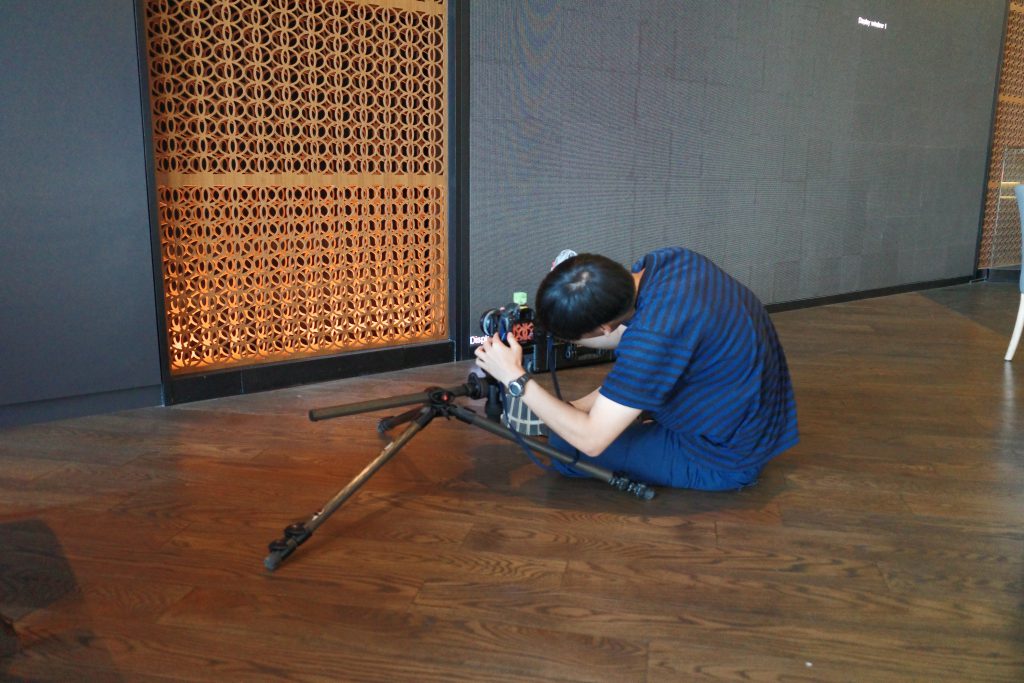
งานถ่ายภาพสถาปัตยกรรมในปัจจุบันมีตัวเลือกเยอะขึ้น แต่ละคนจะมีมุมมองการเล่าเรื่องคนละแบบ
- Capturing Experiences การเก็บประสบการณ์จริง ในโลกแห่งความเป็นจริง ภาพที่เป็นตัวแทนความทรงจำอันสวยงามของบรรยากาศและสถานการณ์รอบตัวเรา
- Scene Searching ความพิถีพิถันในการเลือกและตีกรอบมุมมอง การกำหนดจุดยืนเพื่อแสดงสิ่งที่ต้องการที่เฉพาะเจาะจงอย่างลงตัว
- Awaiting Moment แสงคือลมหายใจของภาพถ่าย เวลาของแสงกำหนดโทนสีซึ่งเป็นที่มาของอารมณ์ทั้งมวลของการรับรู้ เวลาที่ถูกต้องจึงสำคัญที่สุดเสมอ
- Concept Outlining ความรู้ความเข้าใจในสิ่งที่ถ่าย กำหนดแนวทางในการถ่ายทอดมุมมองที่จะแสดงถึงแนวความคิดอันเป็นที่มาของงานออกแบบได้อย่างเฉียบคม
- Picturing Context สถาปัตยกรรมเกิดขึ้นท่ามกลางบริบทแบบใดแบบหนึ่ง และมีผลกระทบกันไปมาเสมอ ไม่สามารถแยกจากกันได้ การแสดงให้เห็นว่างานสถาปัตยกรรมตั้งอยู่ในสภาพแวดล้อมแบบใดจึงเป็นเรื่องน่าสนใจเสมอ
- Identity Defining งานออกแบบที่ดีแต่ละงาน มักมีเอกลักษณ์ของงานนั้นๆเสมอ ไม่จะเป็นรูปธรรมหรือนามธรรมซึ่งเป็นหน้าที่ของช่างภาพที่จะเปิดเผยมันออกมา
- Unforeseen Occurrences หน้าที่สำคัญของช่างภาพคือการค้นหาและจับภาพสิ่งที่แม้แต่ผู้ออกแบบก็ยังคาดไม่ถึงว่าจะได้เห็นสิ่งพิเศษนอกเหนือไปจากสิ่งที่ได้จัดวาง และคาดการณ์ล่วงหน้าไว้แล้ว
- Tasteful Styling ช่างภาพ คือผู้ที่ต้องตัดสินใจในเรื่องความงามอยู่เสมอ และต้องคัดแยกสิ่งแปลกปลอมออกไปจนเหลือไว้แต่ความงาม
- Illustrating Perception การอธิบายธรรมชาติของงานสถาปัตยกรรมที่มี 4 มิติ ด้วยภาพ 2 มิติ เป็นสิ่งที่ท้าทายช่างภาพเสมอ และเป็นความพยายามอย่างเต็มที่ของเรา ที่จะเล่าเรื่องราวและประสบการณ์ทั้งหมด ราวกับผู้ดูภาพได้เข้าไปอยู่ในงานสถาปัตยกรรมนั้นๆ ด้วยตนเอง
- Visually Stunning ในท้ายที่สุด จะมีภาพเพียง 1 ภาพ ที่เป็นตัวแทนของงานสถาปัตยกรรมนั้นๆ ภาพที่สะกดให้คนหยุดดู และเป็นภาพที่สรุปเรื่องราว ความรู้สึกประสบการณ์ ภาพลักษณ์ ที่งานสถาปัตยกรรมนั้นได้แสดงตัวตนออกมา
“งานถ่ายภาพสถาปัตยกรรมในปัจจุบันมีตัวเลือกเยอะขึ้น แต่ละคนจะมีมุมมองการเล่าเรื่องคนละแบบ”
“ปัจจุบันช่างภาพสถาปัตยกรรมมีจำนวนเยอะขึ้นกว่าเมื่อก่อนมาก และคิดว่าน่าจะยังต้องการอีกเยอะเลย แต่อาจจะเรียกได้ว่ามันเยอะพอในระดับที่นักออกแบบหรือเจ้าของที่อยากจะถ่ายภาพสถาปัตยกรรม สามารถเลือกได้แล้วว่าเขาอยากถ่ายทอดงานของเขาออกมาในสไตล์ไหน ในอนาคตผมว่าก็จะเยอะกว่านี้ด้วย แล้วก็หลากหลายกว่านี้ ต่อไปก็อาจจะมีช่างภาพประจำอยู่ในบริษัทสถาปนิกเลยด้วยซ้ำ เพื่อตามไปเก็บขั้นตอนการออกแบบ ขั้นตอนการทำงาน ผมคิดว่าในอนาคตจะเป็นแบบนั้น แล้วก็ในสายถ่ายภาพ มันจะมีวิธีการต่อยอดอะไรได้อีกหลายแบบ” หากย้อนไปสมัยที่แป๊ะเริ่มทำงานถ่ายภาพสถาปัตยกรรม คนที่ทำงานในด้านนี้อาจจะเรียกว่านับคนได้ แต่ในปัจจุบัน ความต้องการการใช้ภาพถ่ายมีมากขึ้นเช่นเดียวกับบริษัทสถาปนิกหรือผลงานการออกแบบที่เยอะและหลากหลายกว่าเดิม ทำให้จำนวนช่างภาพสถาปัตยกรรมมีมากขึ้นเช่นกัน ในมุมมองของแป๊ะแม้จะยังไม่มากพอ แต่ก็เป็นการเพิ่มตัวเลือกให้แก่นักออกแบบและเจ้าของให้สามารถเลือกได้ว่างานของเขาเหมาะกับงานของช่างภาพคนไหน ซึ่งช่างภาพสถาปัตยกรรมแต่ละคนก็มีรูปแบบการทำงาน มุมมอง หรือสิ่งที่สนใจแตกต่างกัน และในสายงานช่างภาพสถาปัตยกรรมเอง ก็มีการติดต่อ แลกเปลี่ยน ช่วยเหลือกันอยู่เสมอ เพื่อให้ทุกคนสามารถสร้างสรรค์ผลงานที่ดีไปด้วยกันในมุมมองของแป๊ะ สำหรับคนที่สนใจในสายงานนี้ เขาคิดว่าการเริ่มต้นปัจจุบันเป็นเรื่องที่ง่ายขึ้นกว่าในอดีตมากไม่ว่าจะเป็นเทคนิคหรือความรู้ในการถ่ายภาพที่แป๊ะย้ำเสมอว่าเป็นสิ่งที่สามารถหาเรียนรู้ได้ง่ายขึ้น รวมทั้งอุปกรณ์ในการถ่ายภาพที่มีหลากหลายมากขึ้น เพียงแต่ว่าเราต้องรู้วิธีจัดการมุมมองของตัวเองเพื่อถ่ายทอดผลงานที่ดี แล้วค่อยๆ พัฒนาไปตามเส้นทางที่เราสนใจ
“นักออกแบบไทยที่ฝีมือดีมีเยอะขึ้น ในปริมาณที่เยอะขึ้นมากๆ อย่างก้าวกระโดด”
ในฐานะช่างภาพสถาปัตยกรรม ทำให้แป๊ะได้มีโอกาสเห็นผลงานการออกแบบที่หลากหลาย โดยเฉพาะในไทย นับตั้งแต่ 10 กว่าปีที่แล้วจนถึงวันนี้ แป๊ะเห็นว่านักออกแบบไทยที่ฝีมือดีมีจำนวนเยอะขึ้นอย่างก้าวกระโดด จากในอดีตที่เคยมีนักออกแบบหรือบริษัทสถาปนิกไม่มากนัก ปัจจุบันเขาได้มีโอกาสเจอนักออกแบบรุ่นใหม่ที่ฝีมือดีและผลงานหลากหลายมากขึ้นเรื่อย ๆ รวมทั้งเป็นงานที่มีคุณภาพงานดีขึ้นเรื่อย ๆ ทั้งในระดับประเทศและต่างประเทศ ไม่ว่าจะเป็นงานออกแบบสถาปัตยกรรม ออกแบบภายในหรือออกแบบภูมิทัศน์ นักออกแบบไทยก็ได้ไปสร้างชื่อเสียงในระดับโลกอยู่เป็นประจำ ในขณะที่งานออกแบบส่วนหนึ่งมีความหลากหลายมาก แป๊ะก็พบว่ากระแสโซเชียลมีเดียก็มีผลให้เกิดผลงานการออกแบบที่ซ้ำหรือคล้ายคลึงกันอันมีผลมาจากกระแสนิยมในช่วงเวลานั้น ซึ่งไม่ได้เป็นแค่กระแสนิยมในไทยแต่เป็นทั้งโลก แม้ผลงานการออกแบบของนักออกแบบในไทยจะมากและหลากหลายขึ้น แต่อีกสิ่งที่แป๊ะอยากเห็นในวงการการออกแบบคือการสื่อสารให้คนทั่วไปได้เข้าใจหรือเข้าถึงได้ง่ายขึ้น เพื่อจะได้เป็นโอกาสในการถ่ายทอดผลงาน แนวคิดหรือลักษณะการทำงานให้คนนอกวงการได้เข้าใจมากขึ้นไปพร้อมกัน “บางทีเราอยู่ในวงนักออกแบบ คุยเรื่องการออกแบบจนเรารู้กันแต่ในวงนี้ เลยคิดว่าบางทีถ้าเราสามารถคุยกับคนอื่นๆ ให้เข้าใจกันได้มากขึ้น อยากให้เข้าถึงง่าย เข้าใจง่าย ให้คนเข้าไปดูอย่างสนุกสนาน เหมือนอย่างดูป๊อบ ปองกูล มันก็อาจจะเป็นวิธีการที่ดี”
“W Workspace” จึงเป็นบริษัทที่เกิดจากความเชื่อที่ วิสันต์ ตั้งธัญญา เชื่อเสมอว่า สิ่งที่ทำอยู่เกิดจากความรู้และประสบการณ์ที่หลากหลาย ทั้งด้านการออกแบบสถาปัตยกรรม Branding Advertising และอีกหลายด้านเป็นจุดเริ่มต้นของการเกิดบริษัทที่เปิดกว้างสู่การสร้างงานหลายประเภท และยังมีงานอีกมากมายของ W Workspace ที่รอให้เราได้เข้าไปทำความรู้จัก นอกจากงานถ่ายภาพสถาปัตยกรรมที่เราคุ้นตา

Wison Tungthunya began his career as an architectural photographer as soon as he graduated. Twenty-four years later, he’s still walking on this path and has so far spent more than half of his evolving and thriving professional life on ‘W Workspace’. The company was born from his belief and dedication to create a place of his own that is full of variety. Today, Wison welcomes ASA Professional into his space to take a closer look and dive deeper into what the work of architectural photographer is all about.
“After I graduated, I gave myself one year to try do whatever I felt like so that I’d know exactly what I wanted to do.”
1997 was the year Wison finished his bachelor degree in architecture from the Faculty of Architecture of Chulalongkorn University. He then started to work at Skyline Studio, which at the time had Somkid Piempiyachat, one of the pioneers of architectural photography in Thailand, running the show. It was Wison’s intention to give himself a chance, to explore his interest in search of finding a passion that could become his predilection. After entering his third year at Skyline Studio, Wison had learned that architectural photography was something he really liked and was passionate about. At the same time, he felt like he had reached a plateau, and the works he created began to look the same. That, and a realization that there were still many areas of knowledge he had never explored, Wison decided to leave Skyline Studio to broaden and deepen his experiences. Then, he was all over the place, working in diverse fields and industries, from graphic design, character design to working for an advertising agency and production house. Diversifying his professional experiences enabled him to gain a broader perspective and learn different work processes; by experiencing different skills he wasn’t familiar with before.
“W Workspace’s main expertise is architectural photography with brand consultancy on the side.”
W Workspace was founded in 2008. After nine years of working all kinds of jobs, Wison decided to open his own company with a partner, a Chulalongkorn University’s Communication Art graduate (who is now his life partner). In the beginning, W Workspace was primarily working on three types of projects 1) Brand Consultancy 2) Interior Design & Home Decoration and 3) Architectural Photography. Five years into the business, they decided to take a break from the interior design operation and are now only handling brand consultancy and architectural photography projects with the latter taking up a larger portion of the studio’s portfolio. Their architectural photography services encompass still photography, video photography and 360-degree virtual tour films with projects in Singapore, China, Vietnam, Myanmar, and Malaysia. The studio’s brand consultancy services include communication design projects ranging from brand concept to brand identity, and they are now also planning to expand their operations to other services in the future.
“We’re still a small company working from our home office.”
W Workspace is now moving into their thirteenth year. To Wison, his company is still the same small home office just like the one when he first started. In its first year, W Workspace had six members in total, including the two partners. The four other team members were architectural photographers and interior designers. That automatically put the two founders in the position of the administrative officers who took care of project coordination which included basic accounting tasks. Apart from the back of the house operations, the two founders also take the role of the studio’s human resource department, personally selecting the people who would be joining their team.
After ten years of running the business, we finally understand the nature of our company as well as the nature of people who will be working with us. There were people who came in and we just knew that the chemistry wasn’t exactly right, or sometimes that a certain person would be the perfect addition to our team. But that happens after having a conversation with them, meeting them in person, seeing their personalities. Beyond that, we are also expecting to have a diverse variety of people in order to make the company lively and energetic
Currently, W Workspace has 13-14 employees on their payroll, which consists of architectural photographers, administration officers (whom they hired merely three years ago to help handle the company’s operations), as well as hiring an outsourced accountant. The two partners handle the branding projects by themselves, and sometimes work with specialists they used to work with. For some of the projects, they bring in the photography team to help, allowing the team members try something new and broaden their perspectives, which is one of the ways W Workspace operates.
“We don’t have that many rules.”
“All we ask is don’t come into the office later than 10 o’clock in the morning. We don’t have a specific clock out time. It depends on the workload at the time. If they manage to take care of everything and want to grab a beer or watch a movie, we don’t really mind. But if there’s a deadline tomorrow, and everyone has to pull an all-nighter, they have to do what needs to be done. We prioritize the work and the outcome. If they can handle their responsibilities and the work comes out good, then we’re fine with how they do it.” “Freestyle” is probably the word that best describes W Workspace’s approach and method. Wison told us that his studio only has a few rules and is highly flexible. Before Covid-19, the people who didn’t have to work on locations would come into the office since it was more convenient to get things done. But for Wison, having to be on location constantly meant that he was rarely at the office. He would check in on each project online or at meetings when he sees his team members when they’re on location. They also have company meetings at least twice a year to discuss the studio’s plans and directions. And while the pandemic has affected many sectors, the impact for W Workspace, has been minimal. There are more steps added to the work process but they still have clients constantly coming to them with new projects. What’s also interesting is how the pandemic has started the carpool culture between the employees as a way to minimize the risk of the staff getting infected. It’s a small gesture that shows how everyone in this small but warm company cares for each other.
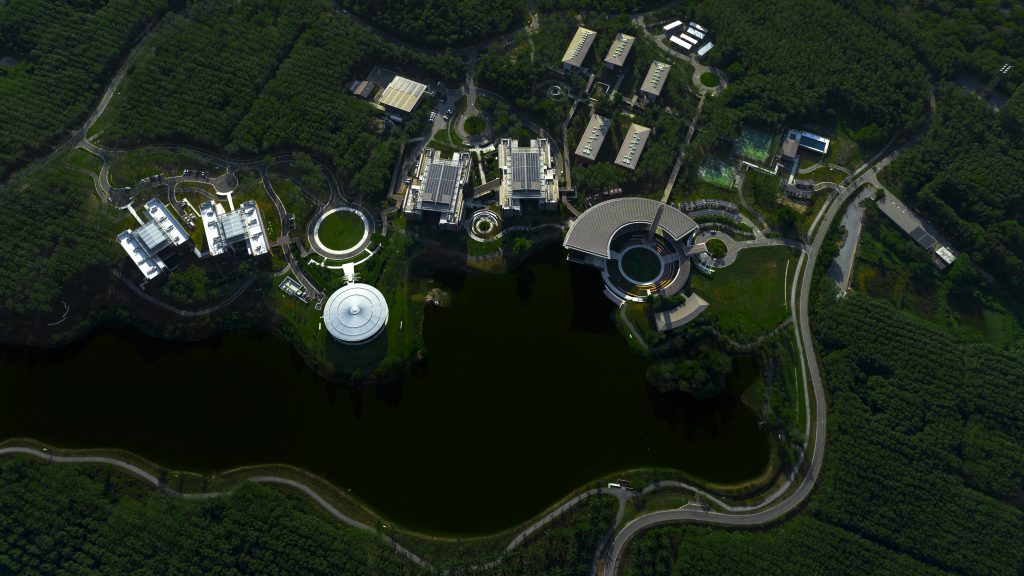
“Being a photographer is hard work.”
Photographers, whichever field they work in, be there architectural or another sector, work hard. For W Workspace, architectural photography is their main interest. Becoming a part of the photography team isn’t just about passing a job interview where there’s only a superficial exchange of opinions and attitudes. There’s a probation period that tests a prospective candidate’s skills, techniques and learning abilities, as well as their chemistry with other team members. As Wison told us, “Being a part of a photography team means you have to work closely with each other, traveling, going on trips together and whatnot.” We asked Wison about the qualities W Workspace looks for in their architectural photographers, the question that many who are interested in this field of work are probably curious to know. “Do they have to have a degree in architecture? Do they need to have some sort of special equipment with them in order to work with you?” Wison’s answer is that to work as an architectural photographer, equipment and perception are skills everyone can learn, and are much easier so these days. What W Workspace looks for isn’t just someone with an architectural degree or experiences. It could be someone with no background in architectural photography whatsoever but someone who possesses a great ability to learn could end up being on his team.
“If you’re an architecture graduate, you may have the advantage with the perspective of someone who studied architecture for five years. Naturally, you tend to understand the subjects better and it’s like you speak the same language as us from the get go. For photographers who are directly and academically trained in photography, they tend to have more advanced techniques. Their works are refined and gorgeous in terms of light compositions. So, all that is left to learn is storytelling. Why is this particular space captured? But that’s something that can be explained and taught. I think I learn something from the other person, too. It’s like we’re exchanging our knowledge and experiences along the way.” All current W Workspace employees except one administrative officer are on the photography team. Everyone is positioned as a “photographer” and is capable of fulfilling different roles in various requirements of the job. New team members will take the role of assistant photographer or work in post production before moving to junior and senior photographers respectively. But overall, regardless of the level, the work process is something everyone can rotate to help each other, allowing every team member to understand every aspect of the job.
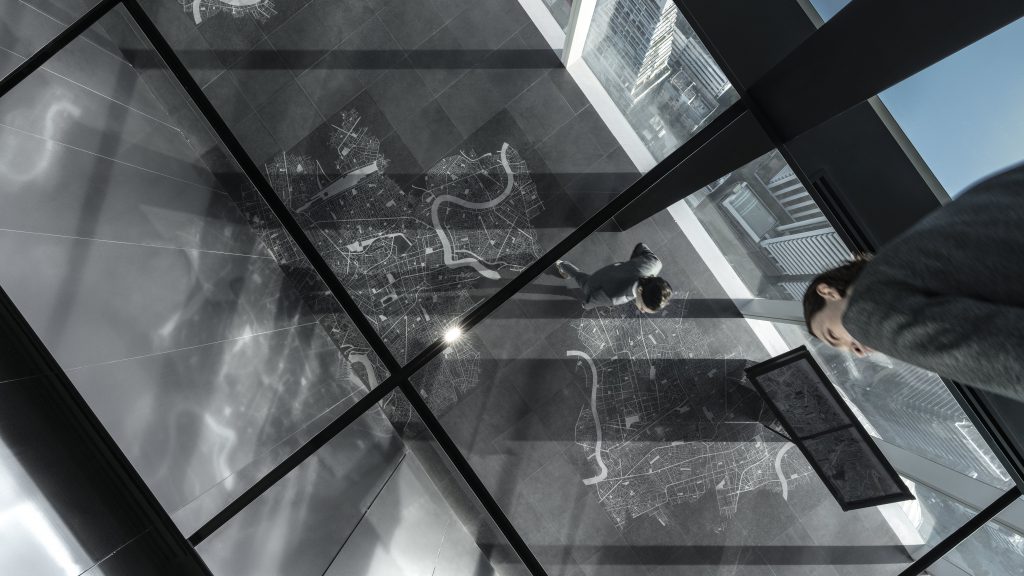
“Photography is a conversation between a designer and a photographer”
In order for us to create great work, the architecture itself has to be good. We can’t turn a stone into gold. The architecture has to be great first, so that it enables us to search for and capture all these different elements. As a professional photographer we need to seek the best part and display it. Most importantly, photographing a work of architecture is a conversation between a designer and photographer, so both parties should understand each other, and speak the same language in a way. If you’re not on the same wavelength, you shouldn’t work together because the picture you capture may not be how the designer or architect wants their work to be portrayed.
In architectural photography, the heart of it all is a mutual understanding between the architect and the photographer. W Workspace works with this as the essence of their mindset. Before each project, the team would do their homework, surveying the site and doing research on the project, figuring out what the architect’s idea behind the work is so that they are able to focus on what to capture and what to communicate. When asked about the signature or identity of W Workspace’s work, Wison’s reply is that he actually doesn’t know. There may be people who can recognize W Workspace’s style, but to him, “Every work that we have done follows the standard we set and perhaps, collectively and over time, it has become our signature without us even knowing.” What’s important for W Workspace, however, isn’t about creating a signature, but continuing to develop themselves to create the best work possible. They work based on ten principles, which pretty much serve as a conceptual framework of their photography that Wison has passed on to his team members. Fun is also one of the elements that enable W Workspace to continue to add one impressive work after another to their portfolio and for us followers to appreciate.
“There are projects that we had so much fun shooting. And by fun I mean there were new possible perspectives and aspects we managed to discover that we had previously never experienced before. It could be a very special light that we came across, which could be an element that a work helps create or it could be a fortunate coincidence. It’s that kind of fun, I guess. It’s also what makes the work fun and not just us taking beautiful pictures just for the sake of getting the job done.”
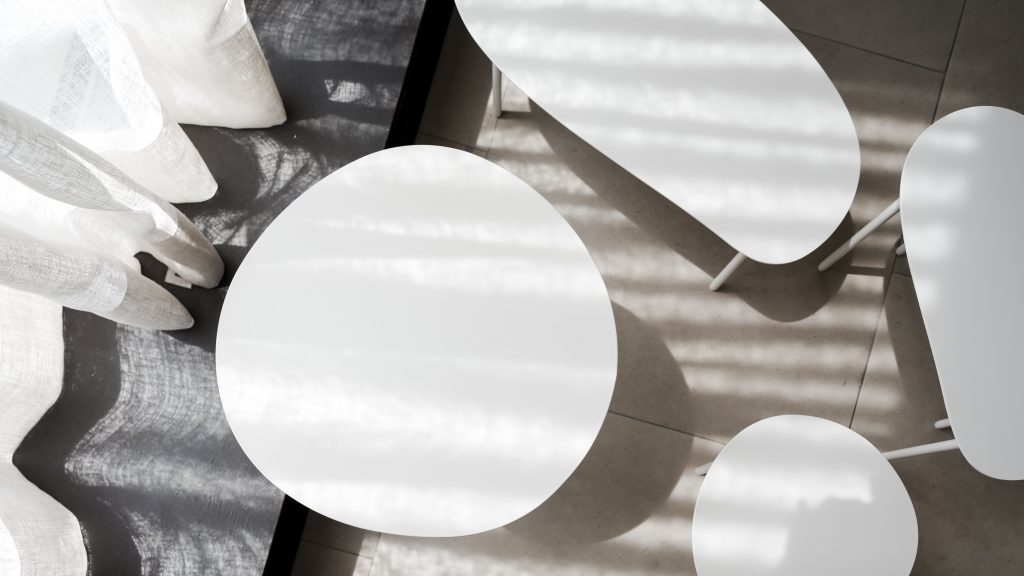
The Ten Principles: W Workspace- How we see architecture
1. Capturing Experiences: Having a hands-on experience in the real world, capturing the beautiful memories of the surrounding atmospheres and situations.
2. Scene Searching: A meticulousness in the way one chooses and frames a perspective, which indicates where a photographer should stand in order to specifically capture and convey a subject.
3. Awaiting Moment: Light is like the air that a photograph needs in order to breathe and stay alive. Each period of time from which the light is originated indicates the color tone that sets the whole mood and how a photograph is perceived. Capturing the right moment is always the most pivotal part of photography.
4) Concept Outlining: A true understanding in the subject allows one to determine the direction in which such subject can be captured to masterfully communicate the ideas behind its conception.
5. Picturing Context: Architecture is created within a certain context and these built structures affect each other’s existences in an inseparable way. Capturing a work of architecture by showing the environment it’s a part of is always interesting.
6) Identity Defining: A good design has its own identity, both concrete and abstract and it’s the photographer’s job to help the work express that identity.
7. Unforeseen Occurrences: One of a photographer’s roles is to search for and capture a work in the way that is unexpected even to the person who designs it, in a way that’s even more special than structures or objects that are carefully curated.
8. Tasteful Styling: A photographer is the person who decides what’s beautiful about a work and extracts and refines the excessive elements to capture nothing but beauty.
9. Illustrating Perception: Encapsulating the four dimensions of architecture with a two dimensional image is always challenging for a photographer. It is also every photographer’s wish and endeavor to tell all the stories and experiences that make viewers feel as if they were inside that particular work of architecture.
10. Visually Stunning: Ultimately, there is only one image that represents a work of architecture; an image that captivates people to stop and look, sums up the stories, sentiments, experiences, identity and character the work tells, expresses and conveys.

“There are many more options nowadays and each photographer or studio has their own way of telling a story.”
“The number of architectural photographers are growing, and I think we still need a lot more. By growing, I mean at the level where designers or owners who want to hire someone to photograph their works can now choose a photographer or studio with the style that they want. I think we’re going to see more people getting into the field in the future and we’re going to witness even more diversity. There may even be an in-house photographer working in a design or architecture firm, so that all the steps in the work process and all the developments of a project can be recorded. I think that’s what the future may be like. In the field of photography, there will be so many more methods and techniques for everyone to experiment on.”
Back when Wison started working, the number of people working in the field could be counted using two hands. These days, the demands for still and moving images are growing, coinciding with the increasing number of design studios and works, hence more architectural photographers emerging on the scene. Despite the growth, Wison still thinks it isn’t enough although the tendency does provide more alternatives for architects, designers and owners to choose the photographer or studio whose style best suits their works. Each photographer has their own style, points of view and interests. The architectural photographer community has been exchanging ideas and helping each other so that everyone can create greater works together. For the people who are interested in this line of work, Wison thinks it’s much easier to start a career in the field since the techniques and knowledge available are more accessible than before and the tools and technologies are much more diverse. Nevertheless, one needs to learn how to develop and work with their own perspectives in order to best capture each subject while continuing to develop themselves in the directions they’re interested in.
“There is a significant increase in the number of talented Thai designers”
As an architectural photographer, Wison has seen a great diversity in design and architectural projects, particularly in Thailand. In this past decade, he has witnessed a significant increase in the number of talented Thai designers, compared to the past where there were only a few number of architecture and design firms. He has now been introduced to more talented designers and architects both in Thailand and overseas with works of higher and more diversified qualities that are working on all kinds of projects from architecture, interior design to landscape architecture. Meanwhile, Thai designers have continuously made names for themselves on an international level. Accompanying the diversity, however, are works influenced by social media with ideas that get repeated as a result of trends. Not only does this happen in Thailand but everywhere around the world. “It’s happening on a global scale because with social media, there are trends involved, from pastels, to monotone or geometric forms. There were times when interior and architectural design were moving toward that same direction. A lot of works looked quite the same. Perhaps it’s the clients’ demands or people using the same sources to find ideas and get inspired. There are good outcomes that have come out of this tendency, and it’s fun, and there are repetitions. It’s normal. It’s just how things are.”
While Thailand’s design scene is seeing greater diversity from Thai designers and architects, what Wison is hoping to see from the industry is for the works to be more accessible, so that more people can have a better understanding and appreciation of what designers and architects are doing. “Sometimes, when you’re a part of the design industry, and you talk in design jargon, from one designer’s point of view to the other, and you understand each other, and that’s it. I think if we can perhaps try to expand our conversation for more people to join us and understand what we’re doing more, making works more accessible and easier to experience, understand and enjoy. Similar to the way famous singers communicate with their fans, that would be nice.”
“W Workspace” was born from what Wison Tungthunya has always believed that what he’s doing is a result of combined knowledge and experiences in architecture, branding, advertising, and many more fields. Together, everything melded together to become a starting point of the company that is now expanding its horizon to more diverse projects. And there are still many more aspects about W Workspace waiting to be discovered, beyond their gorgeous photographs of beautiful works of architecture.


